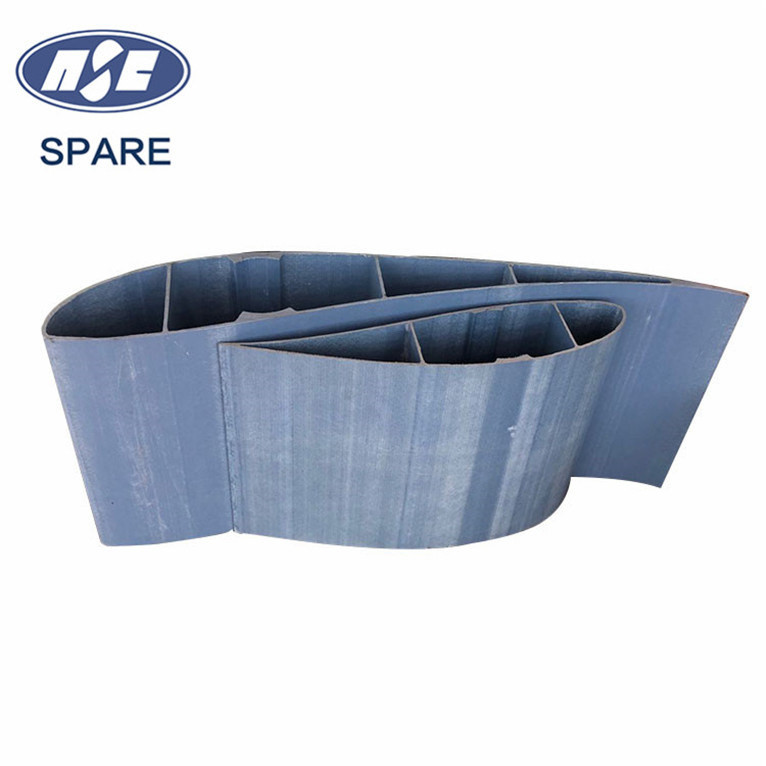- FRP Cable Tray System
- FRP Connectors
- FRP Handrails And Fences
- FRP Moulding
- FRP Pultruded Grating
- Residence Building
- Tool Handle
- Cooling Tower Structure
- FRP custom products
- Bridge Structure components
- FRP photovoltaic support
- Structural Component Applications
- Decking and Planting
- Decking and Planking
- FRP Assemblies
- FRP Decking and Planking
- FRP Building reinforcements
- FRP Structure shapes
01
FRP blades for cooling tower fans
Product Description Because the structural materials used in cooling towers must withstand a variety of environments during operation, including chemical and biological attacks and harsh environments, pultruded fiberglass reinforced plastic (hereinafter referred to as GFRP) profiles in addition to the high strength and light weight of fiberglass In addition to its strong anti-corrosion properties, compared with other FRP production processes such as hand lay-up or RTM, the pultrusion process is highly economical and has the most stable material properties, so it is the dominant choice for cooling tower structural parts.
Pultruded GFRP for cooling towers competes with wood, concrete and steel as a structural material and in all cases offers uncompromising advantages over these materials: There is no biomass corrosion compared to wood, fiberglass and resin do not provide microorganisms. GFRP has good chemical resistance compared to steel and concrete materials. Lightweight compared to structural wood, steel, and concrete. Maintenance-free and easy to replace even damaged parts. Main structures: square tubes, rectangular tubes, angle steel, channels, I-beams, decks, flat bars, etc., will be used on guardrails. Some special shapes: such as handrails, skirting boards, etc. The blade is also one of the key components of the cooling tower fan. Its main function is to generate airflow so that the circulating water can exchange heat with the outside air, thereby achieving the effect of heat dissipation and cooling. In an all-glass fiber reinforced plastic cooling tower, the manufacturing process and material selection of the blades can ensure high strength and stiffness, allowing the cooling tower to operate more stably and safely.
Nanjing Sibel has more than 200 molds of various specifications that can be used to produce GFRP products required for building cooling towers. Nanjing Sibel cooling tower pultrusion GFRP implementation standards: GB/T7190.2-2017 Mechanical ventilation cooling towers Part 2: Large open cooling towers. GB/T 31539-2015 Fiber reinforced composite pultruded profiles for structural use.
Because the structural materials used in cooling towers must withstand a variety of environments during operation, including chemical and biological attacks and harsh environments, pultruded fiberglass reinforced plastic (hereinafter referred to as GFRP) profiles in addition to the high strength and light weight of fiberglass In addition to its strong anti-corrosion properties, compared with other FRP production processes such as hand lay-up or RTM, the pultrusion process is highly economical and has the most stable material properties, so it is the dominant choice for cooling tower structural parts.
Pultruded GFRP for cooling towers competes with wood, concrete and steel as a structural material and in all cases offers uncompromising advantages over these materials:
There is no biomass corrosion compared to wood, fiberglass and resin do not provide microorganisms.
GFRP has good chemical resistance compared to steel and concrete materials.
Lightweight compared to structural wood, steel, and concrete.
Maintenance-free and easy to replace even damaged parts.
Main structures: square tubes, rectangular tubes, angle steel, channels, I-beams, decks, flat bars, etc., will be used on guardrails.
Some special shapes: such as handrails, skirting boards, etc.
The blade is also one of the key components of the cooling tower fan. Its main function is to generate airflow so that the circulating water can exchange heat with the outside air, thereby achieving the effect of heat dissipation and cooling. In an all-glass fiber reinforced plastic cooling tower, the manufacturing process and material selection of the blades can ensure high strength and stiffness, allowing the cooling tower to operate more stably and safely.
Nanjing Sibel has more than 200 molds of various specifications that can be used to produce GFRP products required for building cooling towers.
Nanjing Sibel cooling tower pultrusion GFRP implementation standards:
GB/T7190.2-2017 Mechanical ventilation cooling towers Part 2: Large open cooling towers.
GB/T 31539-2015 Fiber reinforced composite pultruded profiles for structural use.
Product Drawing 






















